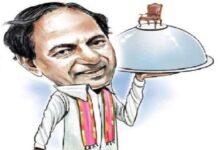The ATM industry in India, where a large portion of the population is still struggling for banking facilities, may be in a rut.
Up to 1,782 ATMs across the country were shut down between May and November 2017, Reserve Bank of India (RBI) data show. This is the first time in five years that there’s been a consistent month-on-month decline in ATMs since they were introduced in India in 1987.
This backslide has been triggered by the rise in digital transactions, a cap on the number of free withdrawals (even from ATMs of an account-holder’s bank), and the sheer economic unviability of running these facilities.
It may be too early to write an obituary for ATMs as India remains a cash-driven economy, but the era of staggering growth is surely over.
In the last few years, banks and the government have been pushing the digital economy. The demonetisation of two key high-denomination currency notes in November 2016 was aimed at nudging people towards e-transactions. Yet, cash is inching back to the pre-note ban level.
Bankers, though, argue that there is a definite shift towards digital transactions and, therefore, investing big in cash-dispensing machines doesn’t make sense. “(The) ATM is a sunset technology now,” said Ashutosh Khajuria, executive director and chief financial officer of Federal Bank. “More and more people are gradually shifting towards digital money, and with the coming up of more payment solutions like the Unified Payments Interface (UPI) and Google’s Tez, this shift will become more dramatic in the near future.”
There’s another other sticky problem. Growth has also been hampered because the fee earned by banks and ATM deployers from machines hasn’t increased for six years, even as costs have risen, said Sanjeev Patel, CEO of Tata Communications Payments Solutions, which runs the Indicash network of ATMs.
“The interchange fee (the amount paid by one bank to the other when its customer uses the other bank’s ATM network) has been stuck at Rs15 for cash transactions and Rs5 for non-cash transactions since 2012,” Patel said.
It takes anywhere between Rs5 lakh ($7,840) and Rs7 lakh to set up an ATM, depending on the location. This is apart from the monthly expense on rent, electricity, security, maintenance etc., which has risen over the years.
Meanwhile, since November 2014, the Reserve Bank of India has allowed lenders to charge even their own customers for ATM transactions over and above the five free ones. That has resulted in a decline in ATM activity, further squeezing banks’ and ATM firms’ profitability as they earn on a per-transaction basis. Typically, it takes anywhere between 100 and 150 transactions a day for an ATM to be profitable.
So, most banks are now rationalising their ATM network, said Raj Narayan, head of sales, banking and transit at AGS Transact Technologies, another firm that runs and manages ATMs. “Most lenders are burdened with a huge pile up of bad loans. So, they are taking a closer look at the cost structure and shutting down or relocating ATMs that are not profitable,” he said.
Still, these machines will remain deployed on a large scale in certain geographies, including the hinterlands, as digital banking is yet to catch up there. #KhabarLive






